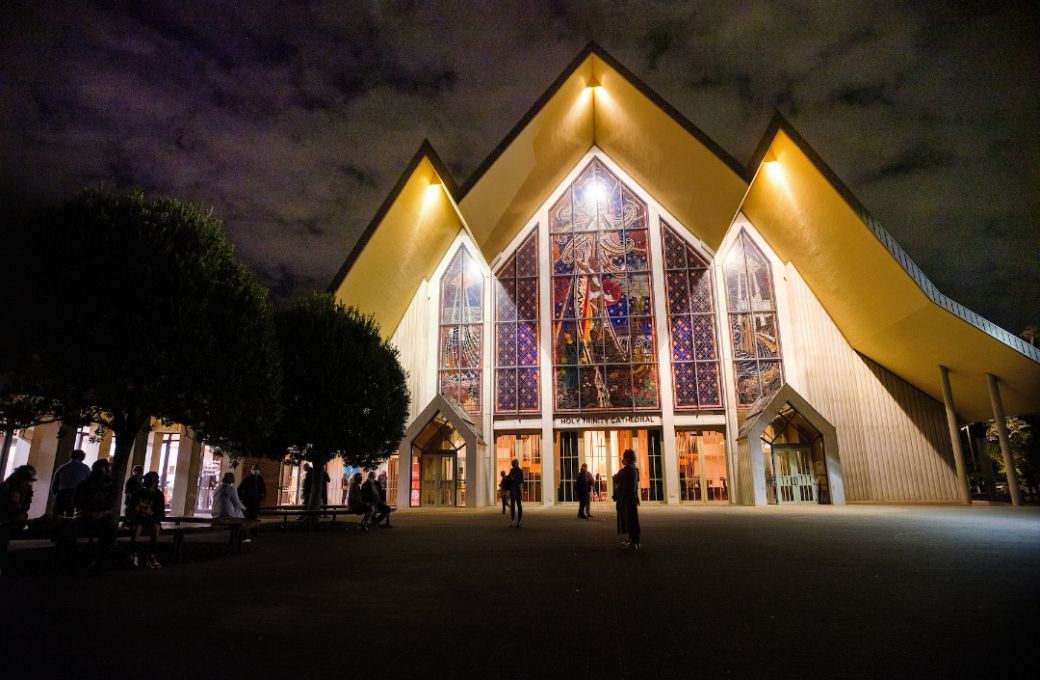For its “Baroque and Beyond” series, the Auckland Philharmonia Orchestra chose to pair Bach and Stravinsky, a musical coupling that, given the contrapuntal rigour of both composers, and the latter’s reverence for the former, made a great deal of sense of paper, if less so in practice on this occasion. Bach often adapted his music for different instruments and the Concerto for Violin and Oboe, BWV1060R, is no exception. While it was likely that it did start off for this combination, it was reworked into its now most familiar guise as a concerto for two harpsichords. With the original now lost, the version we heard here is a further reconstruction back into a concerto for solo violin and oboe.

Unfortunately, this performance in Holy Trinity Cathedral was not one to bring out the intricacies of Bach’s writing or celebrate this combination of instrumental sounds. Whether it was the cavernous acoustics or some other factor, there was a general muddiness to the sound making it hard to discern many of the individual lines. One of the delights of Bach’s music in concert is being to see and hear the contrapuntal themes bouncing between the instrumentalists but there was little chance of that here. This was pretty severe in the case of the orchestra, but even the soloists were affected, especially at lower dynamics. Bede Handley’s oboe fared better, and he made some effect in the passagework, but more of Benjamin Morrison’s violin playing was lost in the opaque soundscape. There were also issues of ensemble, where the two couldn’t seem to coordinate their timings in combined or echoed passages. It was easier to enjoy the Adagio slow movement, with both soloists bringing a welcome vocal-like quality to the ravishing melodies and the more discreet ripieno accompaniment more suited to the space. Sadly, a lack of crispness in the rhythms once again affected the last movement.
After his move to Paris, where he found himself absorbed in neoclassicism, Stravinsky wrote his Eight Instrumental Miniatures, originally a set of piano pieces for children, which he rearranged decades later for a 15-piece ensemble, as was heard here. These are lovely, diverting little works and there was plenty of final instrumental playing, particularly the liquid clarinet and limpid horn players. Particularly memorable was the sweet folksong-like third movement.
Bach’s sublime Double Concerto for two violins in D minor is a mainstay of the Baroque repertoire. Again, sadly, the two soloists didn’t appear to be playing the same work. Morrison’s brighter tones brought more rubato as opposed to Liu-Yi Retallick’s cooler, more rhythmically straight playing, a combination that didn’t particularly make musical sense. The acoustic also wreaked the same kind of havoc as the earlier Bach, with softer lines often lost. They recovered for a transcendent reading of the slow movement, achingly beautiful in tone and in phrasing, and with a leisurely speed that gave the melodies ample space to unfurl. Once again, however, the fleet final movement wasn’t able to create much impact.
The final work was Stravinsky’s Dumbarton Oaks, a lovely chamber concerto commissioned by the owners of the Dumbarton Oaks estate in Washington, DC. Stravinsky made no secret of the inspiration he took from Bach, particular the Brandenburg Concertos, with polyphonic textures and instrumental motifs being passed among the ensemble. As such, it needs something of the rigour of the best Bach performances and the acoustic once again worked against that here. It was hard to follow the fugal elements of the first movement and the more angular or jagged phrases came across a little droopy.


